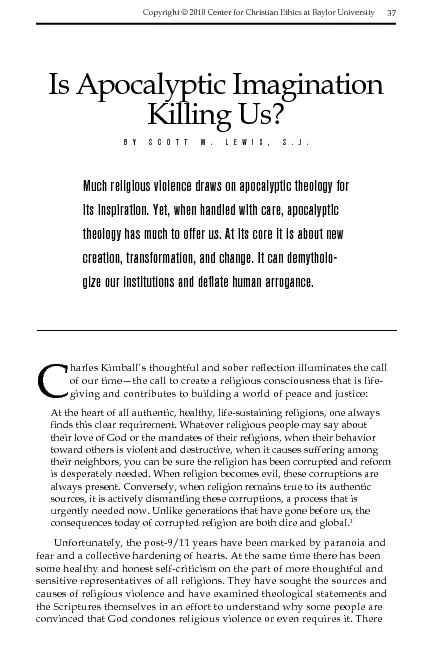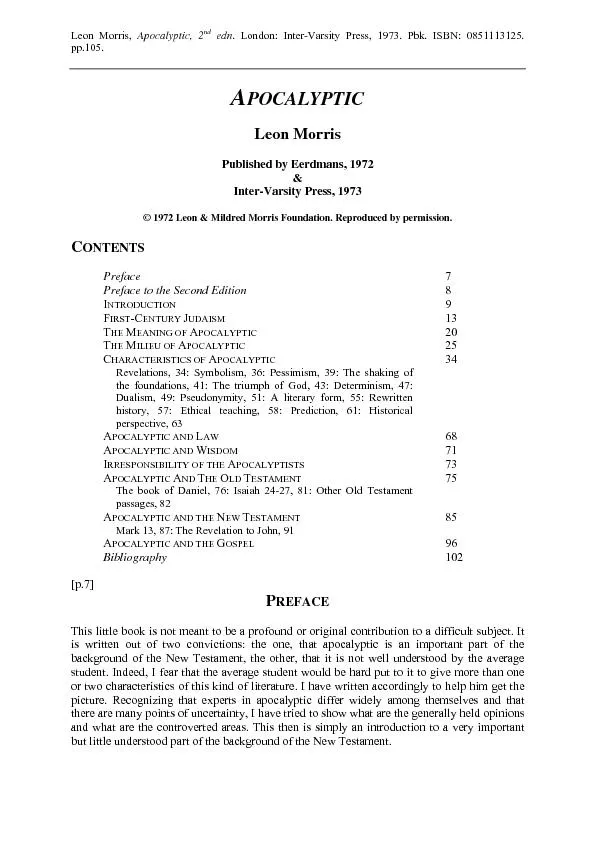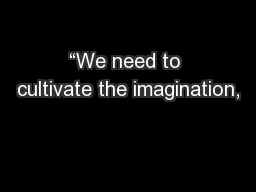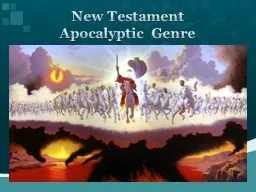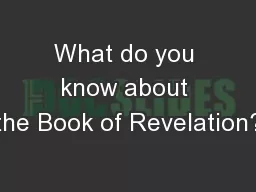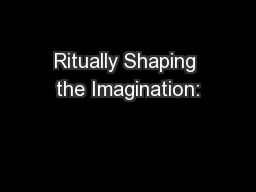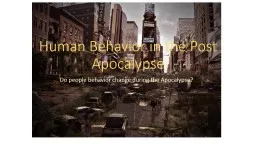PDF-Is Apocalyptic Imagination Killing Us?37
Author : ellena-manuel | Published Date : 2016-05-10
Is Apocalyptic Imagination Killing Us BY SCOTT M LEWI Much religious violence draws on apocalyptic theology for its inspiration et when handled with care apocalyptic
Presentation Embed Code
Download Presentation
Download Presentation The PPT/PDF document "Is Apocalyptic Imagination Killing Us?37" is the property of its rightful owner. Permission is granted to download and print the materials on this website for personal, non-commercial use only, and to display it on your personal computer provided you do not modify the materials and that you retain all copyright notices contained in the materials. By downloading content from our website, you accept the terms of this agreement.
Is Apocalyptic Imagination Killing Us?37: Transcript
Download Rules Of Document
"Is Apocalyptic Imagination Killing Us?37"The content belongs to its owner. You may download and print it for personal use, without modification, and keep all copyright notices. By downloading, you agree to these terms.
Related Documents

